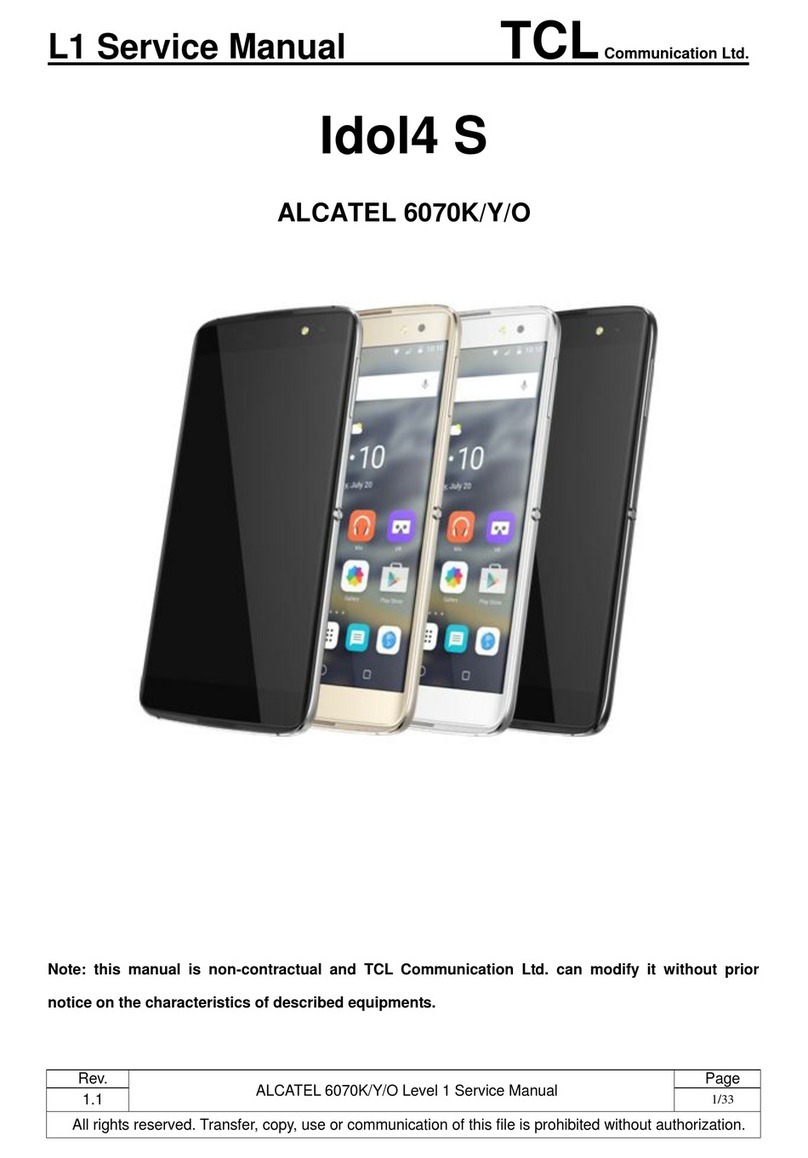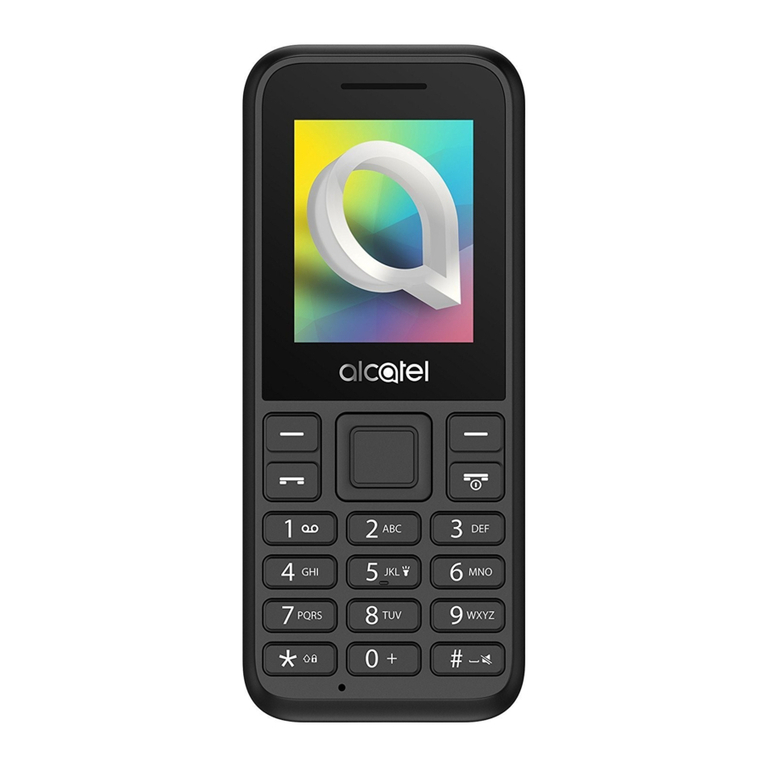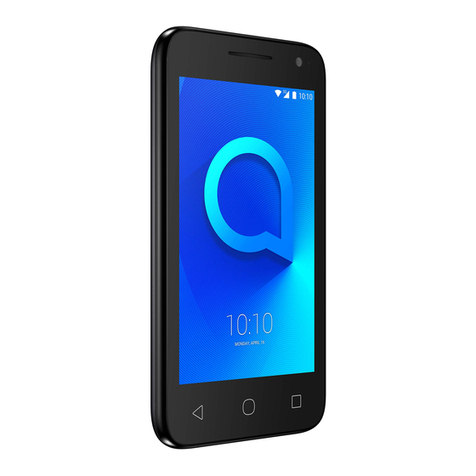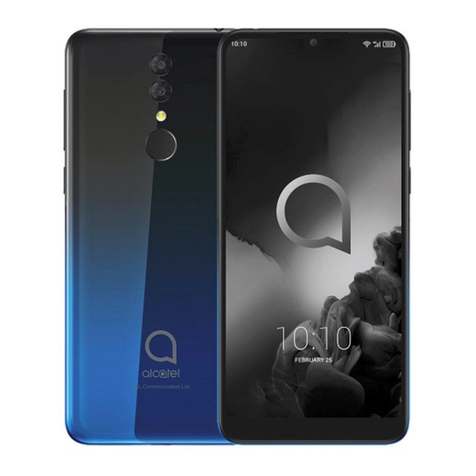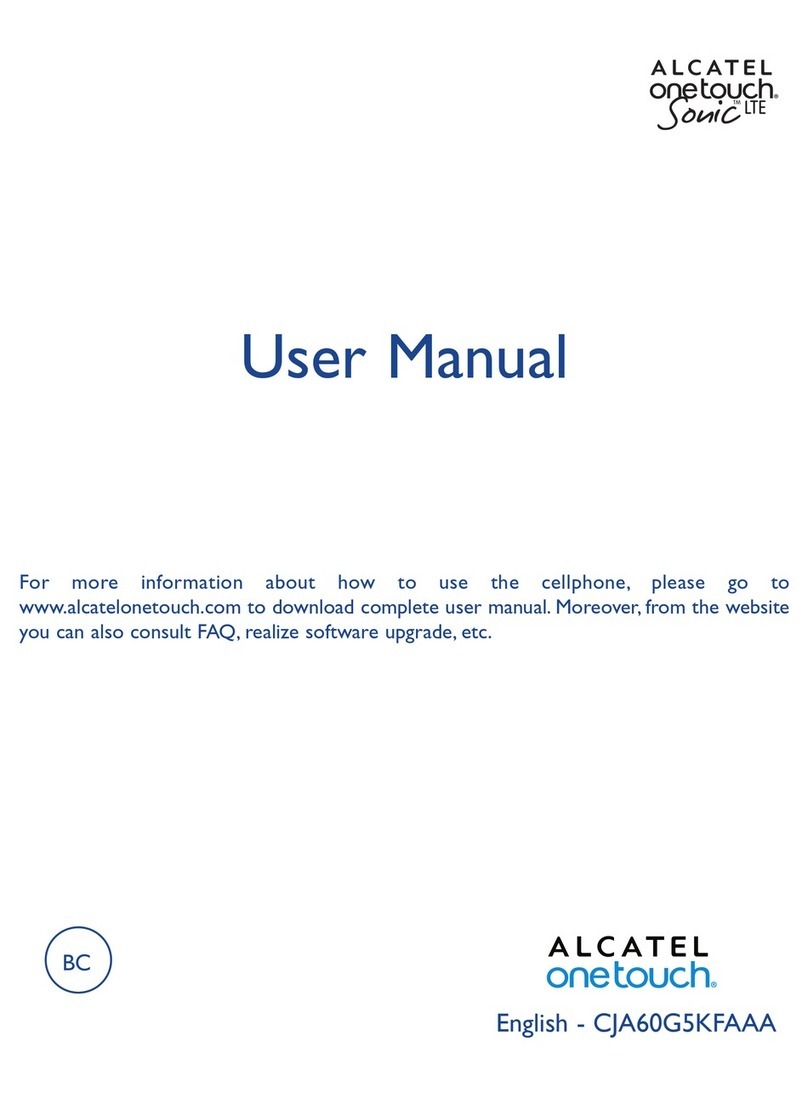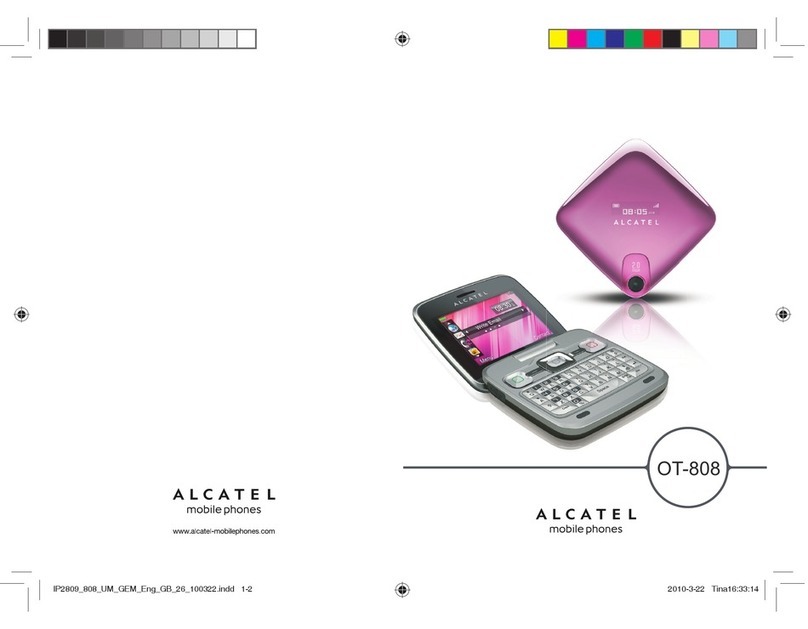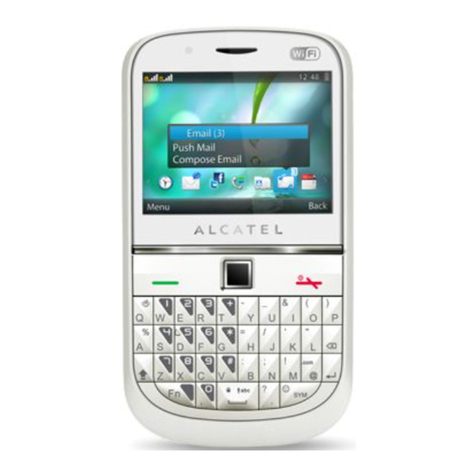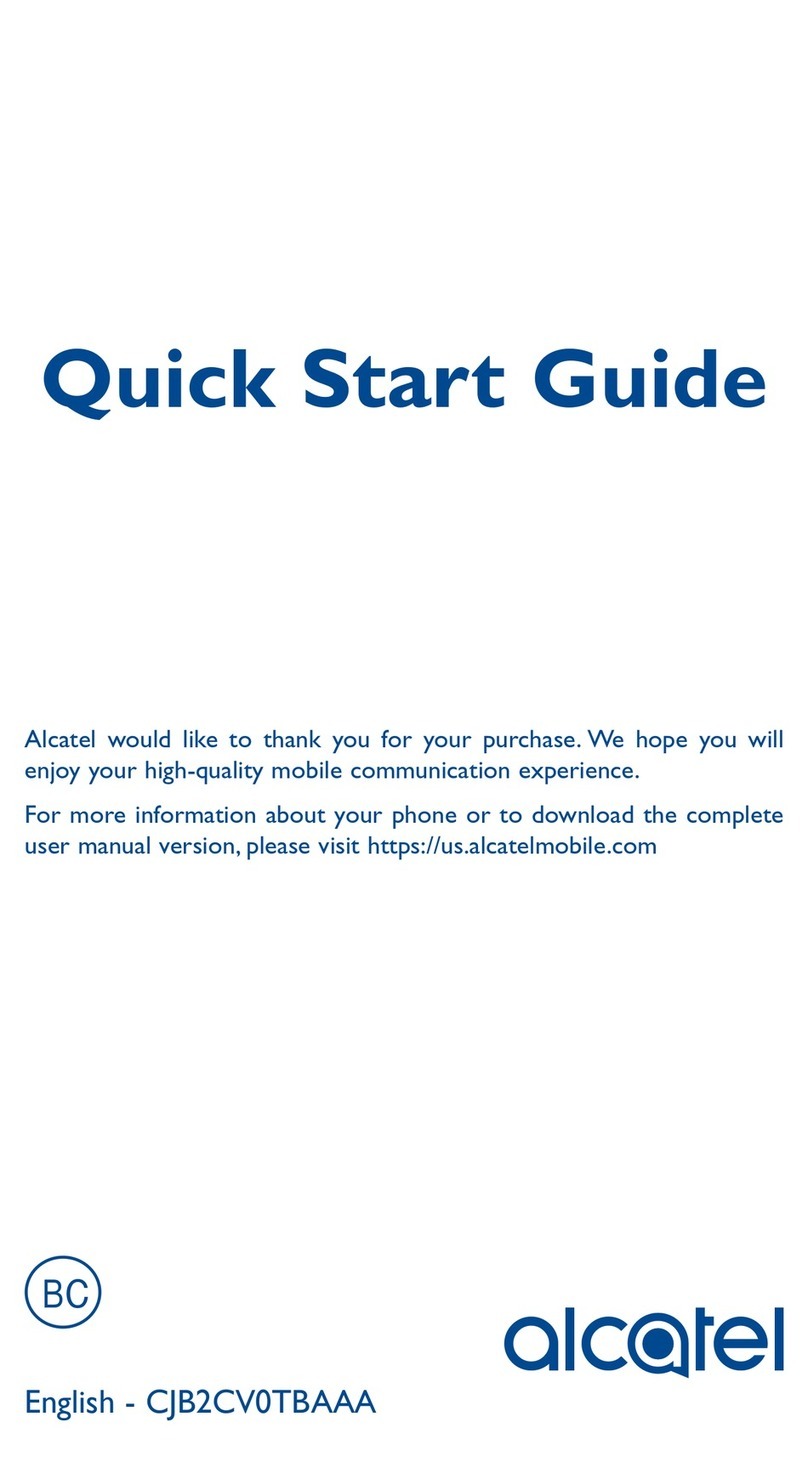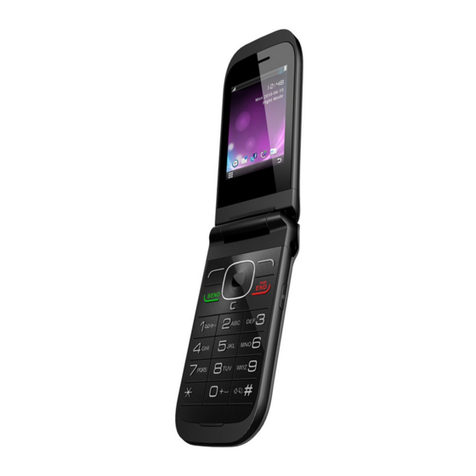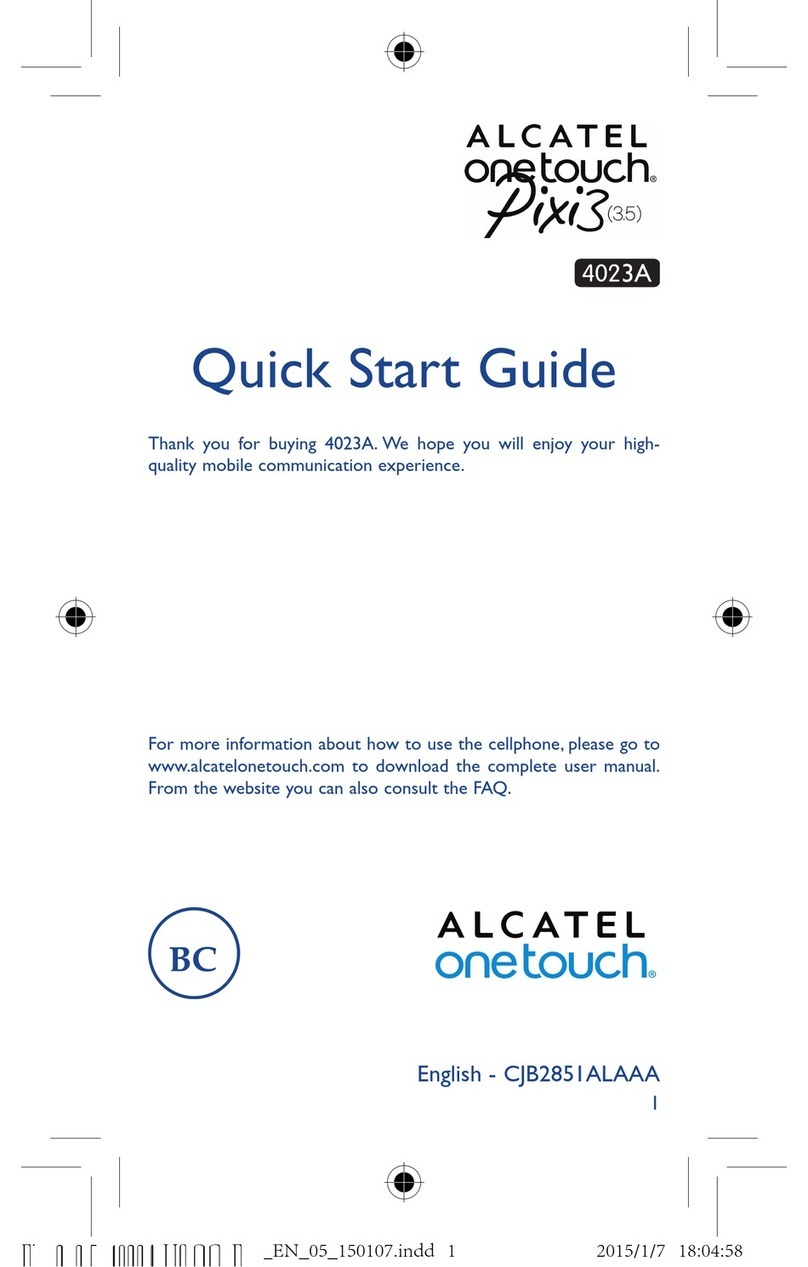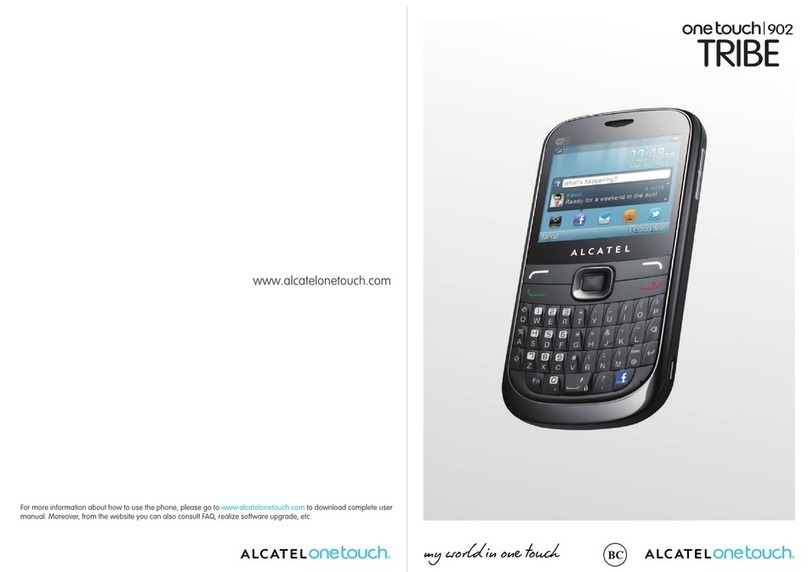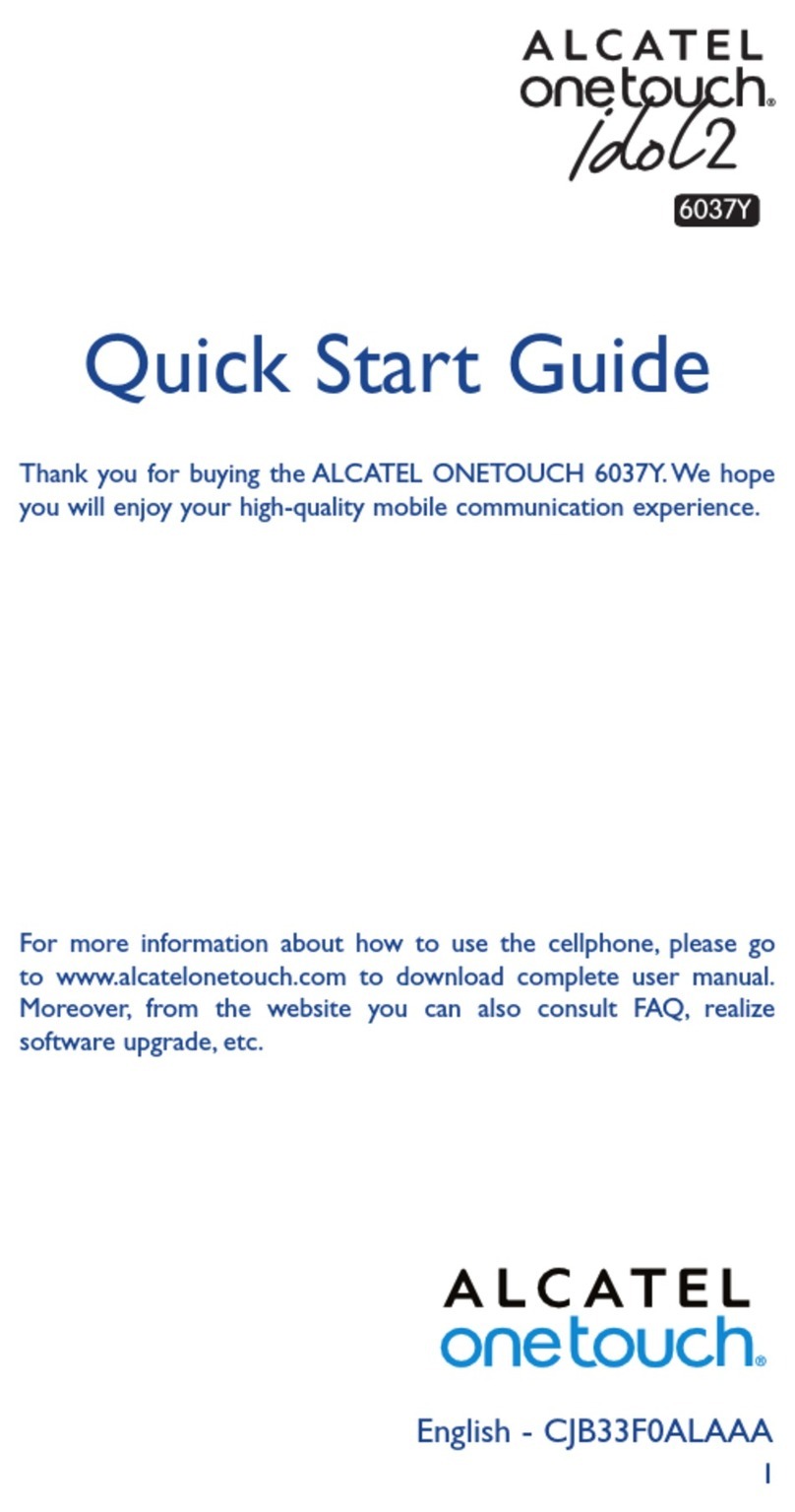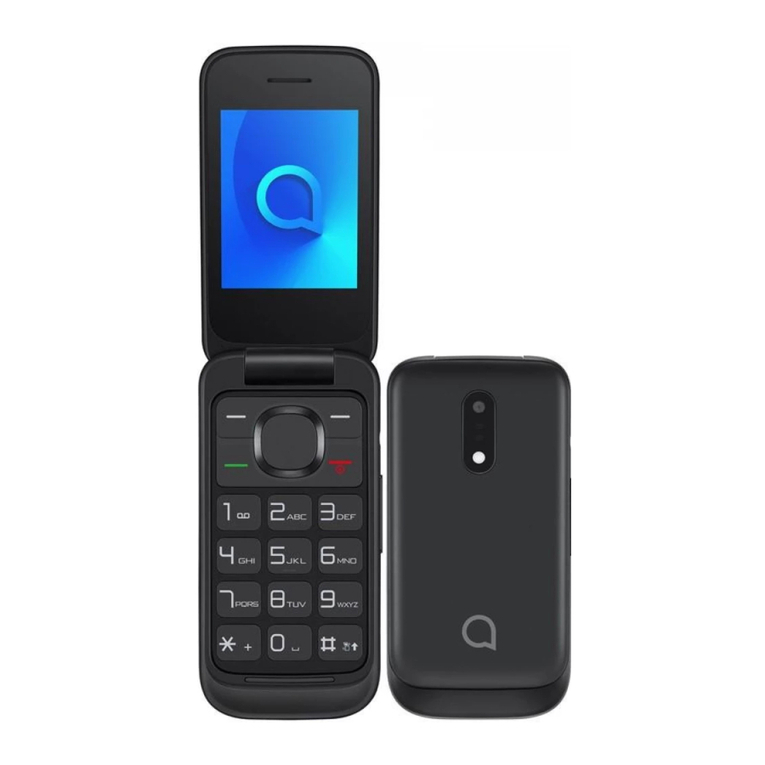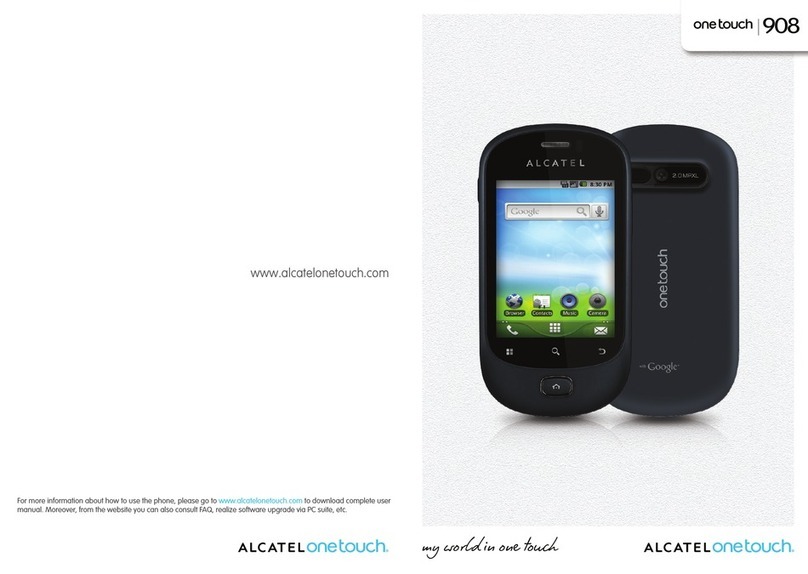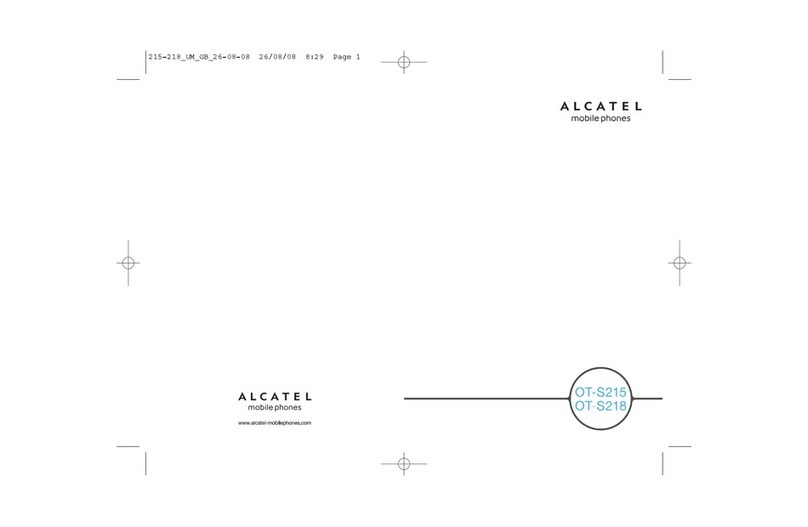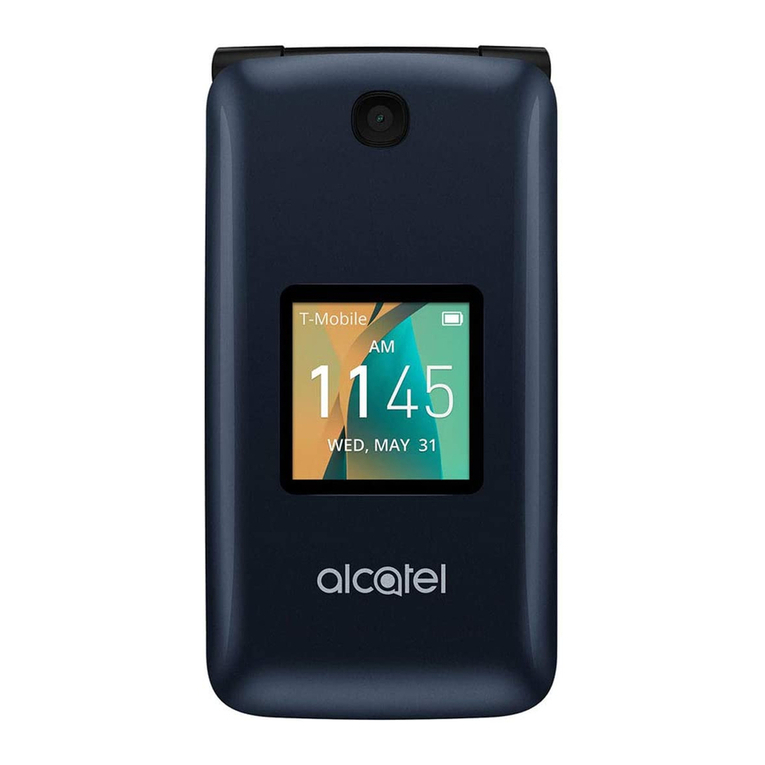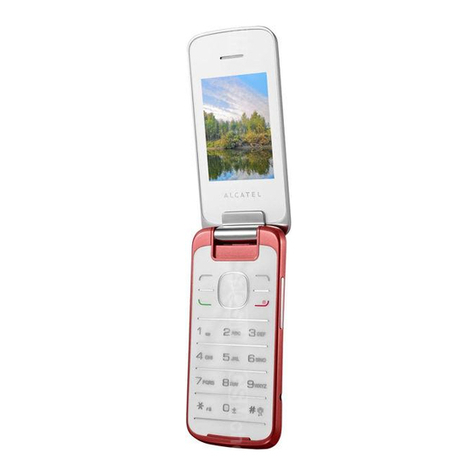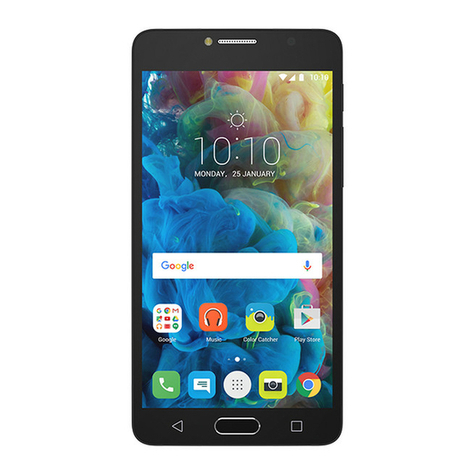14 15
3�2 Answering or rejecting a call
When you receive an incoming call, drag down the green phone icon to answer. Decline the
call by dragging up the red phone icon.
3�3 Consulting your call memory
You can access your call memory by touching from the Home screen and touching Call
log to view call history in categories of Missed calls, Outgoing calls, and Incoming calls.
4 Contacts �������������������������������
You can view and create contacts on your phone and synchronize these with your GmailTM
contacts or other applications on the web or on your phone.
When using Contacts for the first time you are required to add new contacts and
synchronize contacts from other application accounts to phone.
4�1 Adding a contact
Touch Applications tab on the Home screen, select Contacts, then press Menu key from
contacts list screen and touch New contact.
4�2 Importing, exporting and sharing contacts
From Contacts screen, press Menu key to open contacts list option menu, touch Import/
Export, then select Import from SD card, Export to SD card or Share visible
contacts.
You can share a single contact or contacts with others by sending the contact's vCard to
them via Bluetooth®, MMS, Email, etc.
Touch a contact you want to share, press Menu key and touch Share from contact details
screen, then select the application to perform this action.
4�3 Synchronizing contacts in multiple accounts
Contacts, data or other information can be synchronized from multiple accounts, depending
on the applications installed on your phone.
5 Messaging �����������������������������
You can create, edit and receive SMS and MMS with this phone.
To access this feature, touch Applications tab from Home screen, then select Messaging.
5�1 Write message
On message list screen, touch New message to write text/multimedia messages.
Sending a text message
Enter phone number of the recipient on To bar or touch to add recipients, touch
Type to compose bar to enter the text of the message. When finished, touch Send to
send the text message.
Sending a multimedia message
MMS enables you to send video clips, images, photos, animations, slides and sounds to other
compatible phones and e-mail addresses.
An SMS will be converted to MMS automatically when media files attached (images, video,
audio, slides, etc.), or the subject or email addresses added reach the maximum number of
characters allowed.
